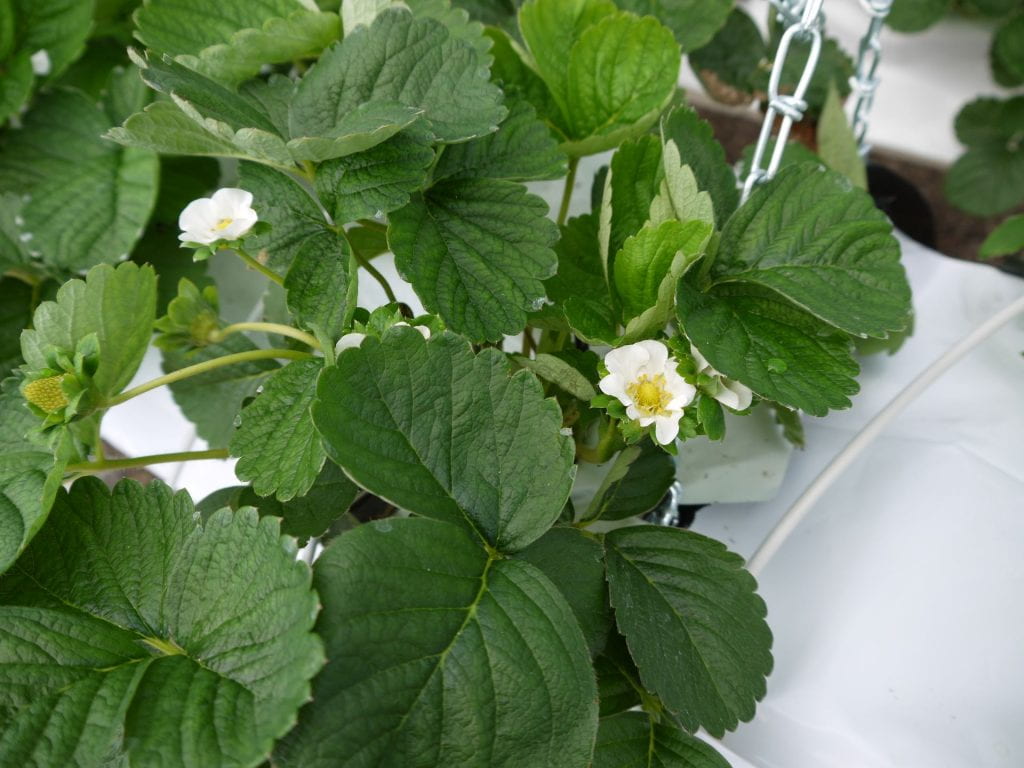
Strawberry plants are photoperiodic in flower induction (meaning that they respond to day/night cycles as stimuli to initiate flower development). Flowering response of strawberry plants, particularly their temperature-photoperiod interaction, is a complex response and relatively unknown. In contrast, when one pursues off-season strawberry production, understanding the flowering responses of cultivars of interest is critical. Greenhouse allows various techniques of controlling flowering, which is generally well practiced in floriculture and ornamental industry in the United States and in winter strawberry production in Japan. Recently, we reported photoperiodic responses of selected US cultivars (Garcia and Kubota, 2017). However, more complete information on especially the temperature-photoperiod interactions is needed to develop flowering control strategies. Some studies have been done to find temperature and photoperiod interactions of US cultivars (e.g., Bradford et al., 2010), but more information is needed for various cultivars under site specific conditions.
Ever-bearing strawberry cultivars (varieties) (including those classified in “day-neutral” cultivar group) are generally known as facultative long-day plants, developing more flowers under longer day. Therefore when everbearing cultivars are used during winter short days, having low intensity photoperiodic lighting to promote flowering may be worth considering. At University of Arizona, we applied 4-hour photoperiod extension at 2-3 micro-mol/m2/s light intensity (or ~20 footcandle) around mid night. At the Ohio State University, instead of using low intensity lighting, a long day of 16 hours was achieved by extension lighting at high intensity photosynthetic lighting (in order to supplement DLI as well as extending day length) for ever-bearing cultivars. When we do extension lighting, we typically add hours before sunrise instead of after sunset, so that natural light quality after sunset is still far-red rich.
Many cultivars used worldwide are short-day type (aka June-bearing type). To induce flowers for these cultivars, daylength must be shorter than the cultivar-specific critical photoperiod at an optimum growing temperature range. Our early study revealed that ‘Chandler’, ‘F-127’, ‘Radiance’, and ‘Shuksan’ critical photoperiods were all between 13 hours and 14 hours (Garcia and Kubota, 2017). This means that when vegetative plants of these cultivars are exposed to 13 hours or shorter duration of lighting, they induce flowering and become reproductive. However, their actual photoperiodic response is often temperature dependent. For example, in the fall 2019, we have very warm weather in Columbus Ohio and our greenhouse average daily temperatures were around 26°C for prolonged period of time, which delayed flower development by many weeks for short-day ‘Chandler’ (but not significantly for ‘Tochiotome’ a Japanese short-day cultivar). When average daily temperatures are in optimum range (i.e., not too warm), strawberry plants tend to develop visible flower initials (Stage 2-3) after 4-5 weeks of exposure to flower-inducing short day condition. Once flower initials of Stage 2-3 are developed, it takes typically additional 3-4 weeks to have anthesis (open flowers). Fruit harvest is typically another 4-5 weeks after anthesis. This understanding of obligate photoperiodic response allows growers to target the first week of fruit production and being able to do so is the advantage of using short-day cultivars.

References
Bradford, E., J.F. Hancock, and R.M. Warner. 2010. Interactions of temperature and photoperiod determine expression of repeat flowering in strawberry. J. Amer. Soc. Hort. Sci. 135:102-107.
Garcia, K. and C. Kubota. 2017. Flowering responses of North American strawberry cultivars. Acta Hort. 1156:483-490.
